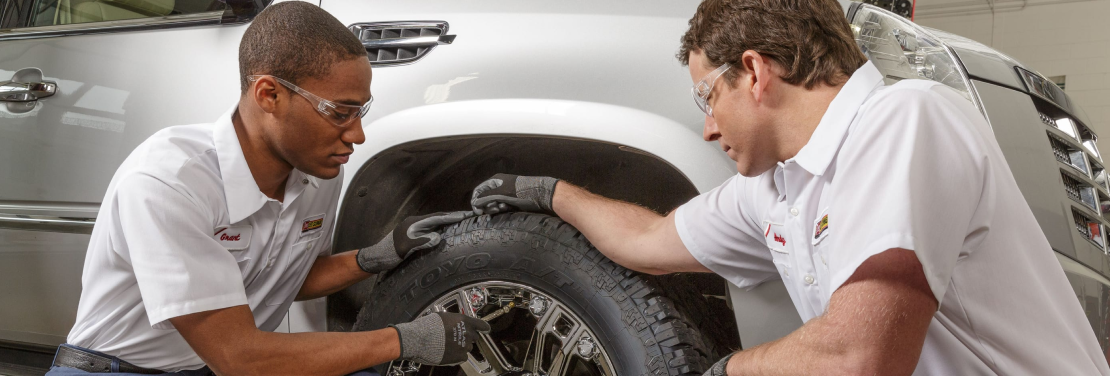Conserve Big with Mopar Tire Service Specials in Morris: Limited Time Provides
Conserve Big with Mopar Tire Service Specials in Morris: Limited Time Provides
Blog Article
Tire Solution: Understanding Tire Stress Tracking Systems
Understanding Tire Stress Tracking Equipments (TPMS) is a critical aspect of maintaining optimal car performance and safety when driving. With developments in vehicle technology, TPMS has become a typical feature in contemporary lorries, offering real-time details on tire pressure degrees. Diving much deeper into the ins and outs of TPMS, one can discover the different elements that compose this system and the relevance of each in guaranteeing precise tracking. From straight to indirect TPMS systems, the landscape of tire stress tracking is varied, each with its one-of-a-kind collection of benefits and factors to consider. Remain tuned to decipher the intricacies of TPMS, from maintenance suggestions to the indisputable advantages of keeping your tires effectively blew up. morris tire and alignment.

Importance of TPMS
The significance of Tire Pressure Monitoring Systems (TPMS) hinges on their capacity to enhance vehicle safety and performance through real-time surveillance of tire pressure degrees. Preserving the proper tire stress is essential for ensuring optimum handling, braking, and overall safety of a lorry. TPMS supplies chauffeurs with immediate responses on any kind of overinflated or underinflated tires, enabling prompt modifications to be made.
Components of TPMS
Consisting of various crucial elements, a Tire Stress Monitoring System (TPMS) works as a sophisticated security function in modern-day vehicles. The main elements of a TPMS consist of sensing units, a control module, and a caution sign. Sensors are commonly situated in the tire valve stem or attached to the wheel assembly, where they measure tire pressure and transfer information to the control component. The control module procedures this information and causes a warning if it spots substantially reduced stress in any one of the tires. The warning sign, commonly a symbol on the dashboard, signals the vehicle driver to inspect the afflicted tire or tires. Some advanced TPMS designs additionally show the actual tire pressure readings for each tire, supplying drivers with real-time information to ensure optimum tire efficiency and safety and security. By keeping an eye on tire pressure continually, TPMS aids stop mishaps, decreases tire wear, and enhances gas effectiveness, making it a critical part for automobile safety and security and efficiency.
Sorts Of TPMS

On the various other hand, indirect TPMS depends on the car's wheel rate sensing units to monitor tire pressure. This system identifies underinflation by contrasting the rotational speeds of the wheels. Indirect TPMS is less costly than direct TPMS, visit this site as it makes use of existing sensing units within the vehicle.
While straight TPMS offers a lot more accurate readings, indirect TPMS is less complex in design and usually calls for much less maintenance. Both systems have their benefits and limitations, and the option in between them usually relies on elements such as cost, car make, and individual preference. Comprehending the differences between these two kinds of TPMS can aid car proprietors make notified decisions relating to tire maintenance and security.
TPMS Maintenance Tips
Effective maintenance of TPMS is vital for making sure optimal performance and safety and security of your vehicle. On a regular basis examining the TPMS sensing units for any kind of damage or rust is essential. Make sure that the sensors are cost-free and tidy from debris that could hinder their performance. Furthermore, it is a good idea to inspect the sensor batteries periodically and change them as required to assure accurate readings. Conduct routine examine the tire stress degrees and contrast them with the TPMS analyses to guarantee they correspond. If there are any type of discrepancies, rectify the system following the producer's standards. Moreover, throughout tire turning or substitute, make certain that the TPMS components are managed thoroughly to avoid any type of prospective damages. Last but not least, if the TPMS advising light illuminates on the control panel, address the problem promptly by inspecting the tire stress and the total system for any faults. By sticking to these maintenance you can try these out pointers, you can extend the life expectancy of your TPMS and improve the safety and security of your driving experience.
Advantages of Appropriate Tire Pressure
Keeping correct tire stress, as stressed in TPMS Upkeep Tips, is vital for gaining the numerous benefits related to optimal tire pressure levels. One of the main benefits of preserving the right tire pressure is enhanced fuel efficiency. When tires are correctly pumped up, there is much less rolling resistance, bring about far better gas economic climate. In addition, proper tire stress makes certain also tire wear, extending the life expectancy of the tires and advertising safer driving problems. With the appropriate tire pressure, lorries likewise have better handling and grip, particularly in negative climate condition. This can enhance general driving efficiency and security for the motorist and travelers. Keeping optimum tire stress can contribute to a smoother and more comfy ride by lowering vibrations and sound triggered by underinflated tires. To conclude, the advantages of proper tire stress exceed simply tire longevity; they incorporate improved gas effectiveness, boosted security, better vehicle efficiency, and total driving comfort.
Final Thought
To conclude, recognizing tire pressure tracking systems (TPMS) is important for keeping optimal tire pressure and ensuring automobile safety and click here for info security. By recognizing the importance of TPMS, being acquainted with its parts, knowing the different types offered, sticking to proper maintenance suggestions, and realizing the benefits of preserving correct tire pressure, motorists can enhance their driving experience and extend the life expectancy of their tires. Correct tire stress is key to secure and reliable car procedure.

Report this page